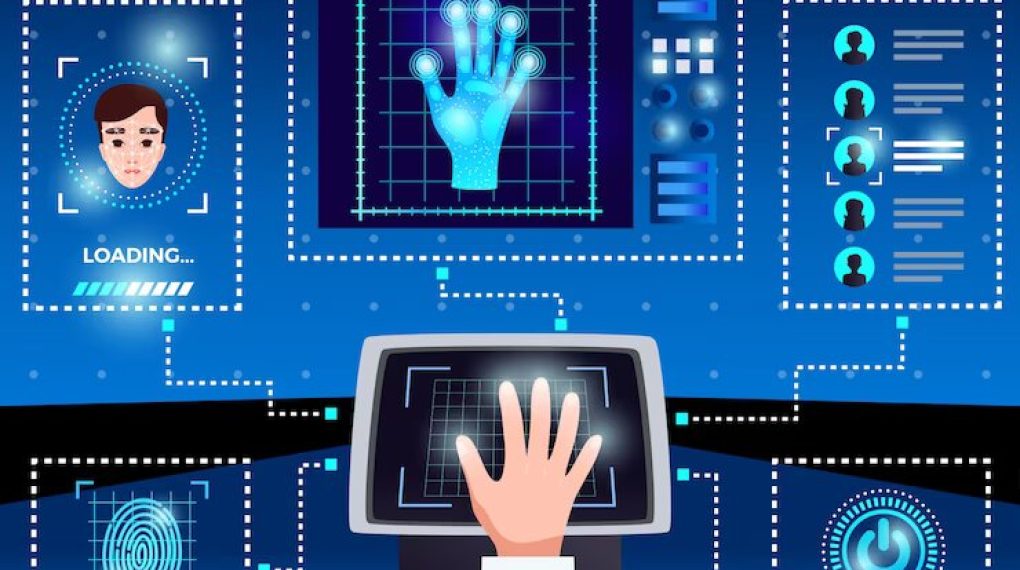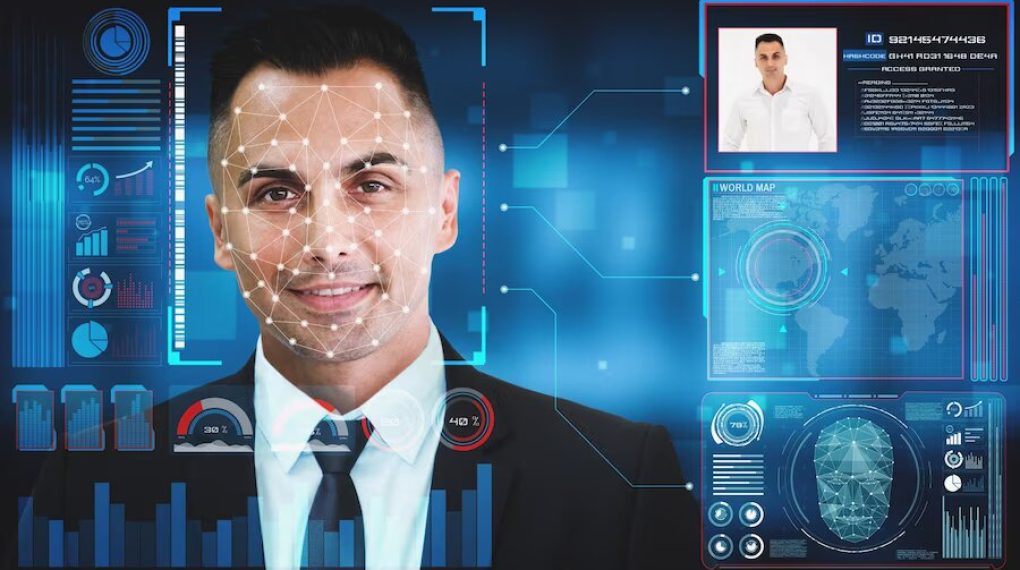
A new technique called AI-driven biometrics employs artificial intelligence to authenticate people using their biometric data. Applications for it range from safe access control systems to face recognition authentication for unlocking phones. By adding an extra layer of security against illegal access, AI-powered biometrics can aid with security and privacy.
Moreover, it can be used to confirm users’ identities and guarantee that only individuals with the proper authorization have access to sensitive data. Due to its ability to identify irregularities in user behavior and notify the system when something suspicious is found, AI-powered biometrics also aid in lowering the risk of fraud and identity theft. This makes it a crucial tool for businesses seeking to safeguard their data and uphold a high standard of.
How AI-Enabled Biometric Technologies Are Transforming The Way We Protect Ourselves

The use of biometric technologies for identity verification and identification has gained popularity recently. Access control and law enforcement are only two examples of the many uses for biometrics, which entails exploiting distinctive physical or behavioral features to identify people. Biometric technologies are, however, being embraced more and more for identity verification, notably in the sphere of Know Your Customer (KYC) compliance, in response to the growing demand for secure and convenient digital transactions.
KYC compliance is a critical aspect of financial services and is mandated by regulations worldwide. It involves verifying the identity of customers and assessing the risks associated with their financial transactions. Traditionally, KYC compliance has been a time-consuming and cumbersome process, involving manual verification of identity documents such as passports and driving licenses. However, with the advent of AI-enabled biometric technologies, this process has been significantly streamlined.
Speed and accuracy in identity verification are two major advantages of AI-enabled biometric technologies. By instantly scanning a person’s face and comparing it to a database of recognized identities, facial recognition technology, for instance, can provide a high level of accuracy. Similar to facial recognition technology, voice recognition technology, and fingerprint recognition technology can also be used for identity verification, with the added benefit of being able to recognize and stop fraud attempts.
AI-enabled biometric technologies are transforming the way we protect ourselves, by providing secure and convenient identity verification solutions. With the increasing adoption of these technologies for KYC verifcation, we can expect to see a more streamlined and efficient financial services industry, with improved customer experiences and reduced risks of fraud.
The Benefits Of Ai-Powered Biometrics In Enhancing User Experience & Security
The use of AI-powered biometrics is on the rise as it can enhance both security and user experience. These systems rely on AI algorithms to detect and recognize human characteristics like faces, voices, fingerprints, and more. Employing these capabilities can enable businesses to offer their customers better security and user experience.
AI-driven biometrics also provides a number of advantages, including:
- More authenticity accuracy
- Safe access to sensitive information
- Improved authentication procedures speed
- Greater protection for privacy
By exploiting these benefits, businesses can give their consumers a better user experience while also ensuring that their sensitive data is protected from unauthorized access.
What Are The Best Practices For Implementing An AI-Based Biometric System?

Implementing an AI-based biometric system can be challenging, it is necessary to guarantee the efficacy of facial recognition methods. When putting such a system in place, firms need to take into account a number of best practices. They include making sure the training data is precise and current, building the system to be dependable and secure, and testing the system frequently to make sure it is accurate.
However, there are several best practices that businesses should follow to ensure that the system is implemented effectively and efficiently. Here are some of the key best practices for implementing an AI-based biometric system:
- Identify the use case: It’s important to identify the specific use case for the biometric system. This could be for employee authentication, customer identification, or any other purpose. This will help determine what types of biometric data should be collected and how the system will be used.
- Choose the right biometric technology: There are several types of biometric technology available, such as facial recognition, fingerprint scanning, and voice recognition. It’s important to choose the right technology based on the use case and the level of security required.
- Ensure data privacy and security: Biometric data is sensitive information that requires strict privacy and security measures. The system should comply with data privacy regulations, such as GDPR or CCPA, and use strong encryption and access controls to protect the data.
- Test the system thoroughly: Before deploying the system, it’s important to test it thoroughly to ensure that it works as intended and can handle the expected volume of users.
- Provide user training and support: Users should be trained on how to use the biometric system and provided with support if they encounter any issues. This will ensure a smooth transition to the new system and help maximize adoption.
- Regularly review and update the system: Biometric technology is constantly evolving, so it’s important to regularly review and update the system to ensure that it continues to meet the needs of the business and users.
Unlock The Future Of Authentication With AI-Powered Biometrics
The future of authentication is biometrics enabled by AI. It can offer a safe and practical approach to identifying users by leveraging their distinctive biological characteristics, such as fingerprints, facial recognition, voice recognition, and iris scan. In a variety of applications, including online banking, access control systems, healthcare software, and others, AI-powered biometrics can be utilized for user authentication.
Businesses all around the world have already embraced technology to a large extent, and more are likely to do so in the near future. Organizations may guarantee the security of their client’s data while offering them a frictionless login experience by utilizing AI-driven biometrics.
Looking ahead, AI-powered biometric authentication is expected to play an increasingly important role in securing our personal information and preventing identity theft.
As AI technology continues to evolve, biometric authentication will become even more accurate, secure, and convenient. This will unlock new possibilities for authentication, and pave the way for a more secure future with Jumio.
Read Also:






